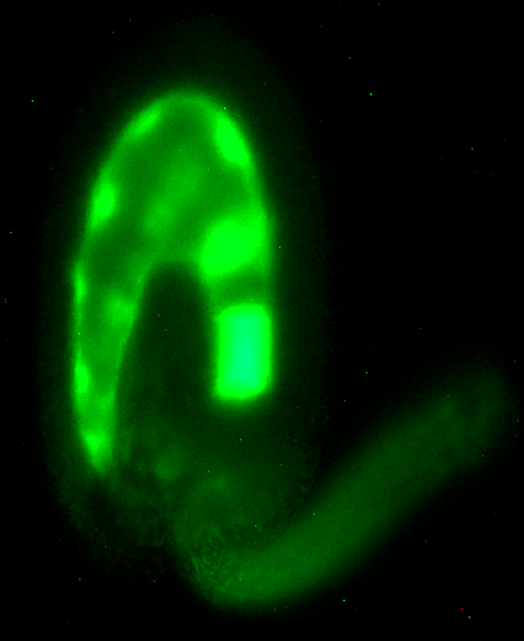|
News & Announcements
(April '10)

Our lab performed a mutant screen to identify genes important for Arabidopsis reproduction. One such mutant contained a large number of undeveloped ovules and very few normal seeds. Thermal asymmetric interlaced polymerase chain reaction (TAIL-PCR) revealed that this mutant is a new allele of LRE (At4g26466). We characterized this mutant and this work has now been published as a research article in the Plant Journal.
Reference:
Tsukamoto, T., Qin Y., Huang, Y., Dunatunga, D. and Palanivelu, R. (2010).
A role for LORELEI, a putative glycosylphosphatidylinositol-anchored protein, in Arabidopsis thaliana double fertilization and early seed development. Plant J. 62 (4): 571-588.
Link to article or PubMed citation
Abstract of research article:
In plants, double fertilization requires successful sperm cell delivery into the female gametophyte followed by migration, recognition and fusion of the two sperm cells with two female gametes. We isolated a null allele (lre-5) of LORELEI, which encodes a putative glycosylphosphatidylinositol (GPI)-anchored protein implicated in reception of the pollen tube by the female gametophyte. Although most lre-5 female gametophytes do not allow pollen tube reception, in those that do, early seed development is delayed. A fraction of lre-5/lre-5 seeds underwent abortion due to defect(s) in the female gametophyte. The aborted seeds contained endosperm but no zygote/embryo, reminiscent of autonomous endosperm development in the pollen tube reception mutants scylla and sirene. However, unpollinated lre-5/lre-5 ovules did not initiate autonomous endosperm development and endosperm development in aborted seeds began after central cell fertilization. Thus, the egg cell probably remained unfertilized in aborted lre-5/lre-5 seeds. The lre-5/lre-5 ovules that remain undeveloped due to defective pollen tube reception did not induce synergid degeneration and repulsion of supernumerary pollen tubes. In ovules, LORELEI is expressed during pollen tube reception, double fertilization and early seed development. Null mutants of LORELEI-like-GPI-anchored protein 1 (LLG1), the closest relative of LORELEI among three Arabidopsis LLG genes, are fully fertile and did not enhance reproductive defects in lre-5/lre-5 pistils, suggesting that LLG1 function is not redundant with that of LORELEI in the female gametophyte. Our results show that, besides pollen tube reception, LORELEI also functions during double fertilization and early seed development.
---------------------------------------------------------------------------------
Click here for other announcements.
|